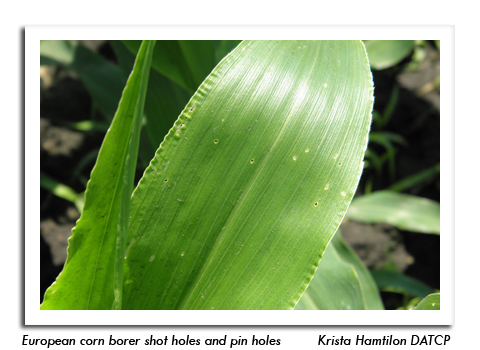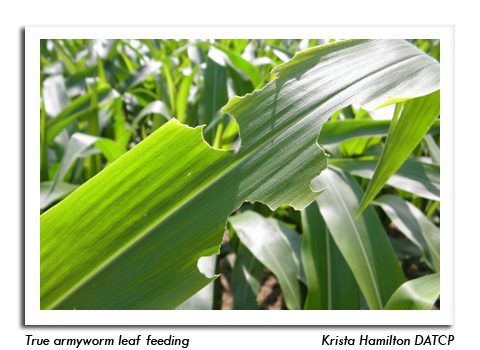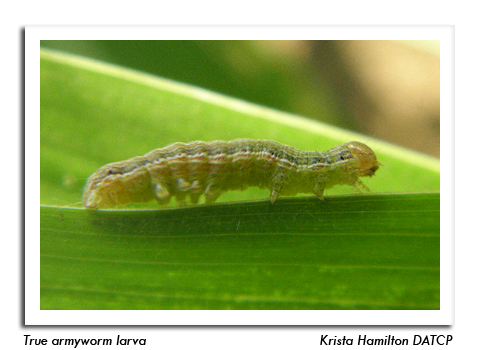
 |
|
|
Corn
Volume 59 Number 9 Date 06/26/2014 EUROPEAN CORN BORER - Larvae resulting from the spring flight are in the early instar stages and fresh whorl-feeding injury is evident in a few southern and central cornfields. Surveys found very low infestations of 1-3% in six of 36 (17%) fields examined this week, in Columbia, Green, Green Lake and Trempealeau counties. The optimal treatment window for first generation larvae has opened in the southernmost areas of the state with the accumulation of 800 degree days (modified base 50°F). TRUE ARMYWORM - Light injury was observed in 33% of cornfields sampled from June 19-25. This should serve as an indication for crop advisors and growers to continue inspecting corn and small grains for developing infestations. Treatment is justified when 25% of corn plants are infested with two or more small larvae (¾ inch or shorter) or 75% of plants are infested with armyworms of any size. STALK BORER - Surveys indicate that 1-4% of edge row plants in several Green Lake, La Crosse, Marquette, Trempealeau and Waushara County fields are infested with small, ½ to 1-inch larvae. This pattern is consistent with the stalk borer, a mid-season pest that migrates from perennial grasses and broadleaf weed hosts in early June and infests the first 4-6 rows of corn. As stated last week, Bt corn hybrids suppress but will not completely control stalk borers, so field scouting is recommended through the V7 stage. -- Krista Hamilton, DATCP Entomologist 





|
|
|